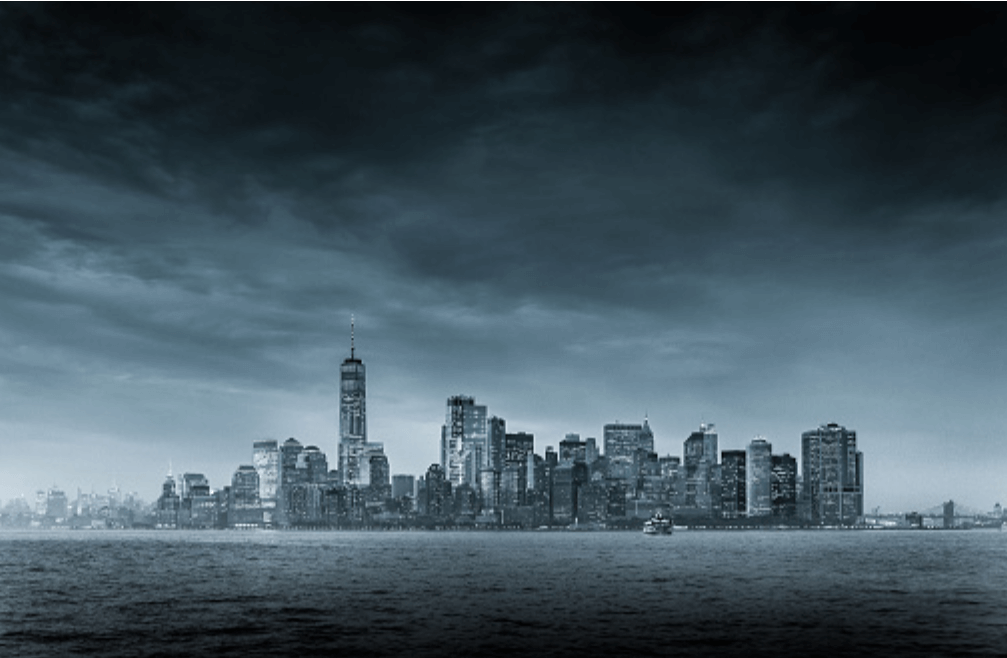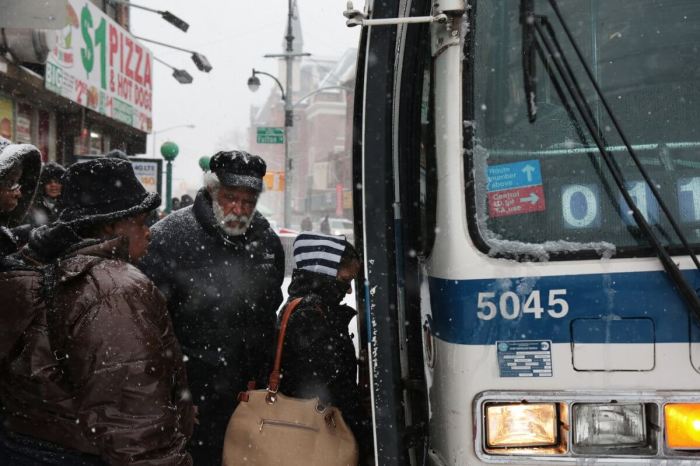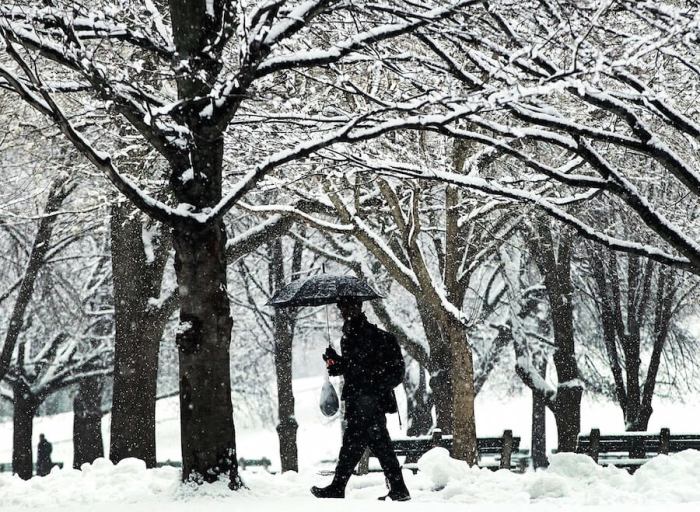A bomb cyclone is barreling toward the Northeast, threatening areas from northern Virginia up through Maine with dangerous winds and heavy rain.
The severe weather was expected to start Wednesday evening and last into Thursday, bringing intense winds as fast as 50 mph in New York City with gusts as high as 60 mph in parts of New England, according to Accuweather. Areas along the coast are expected to be impacted most by these heavy winds, which would likely bring down branches and wires. Forecasters warned that the torrential weather could cause major travel disruptions including flight delays and cancelations, and dangerous driving conditions. Power outages and flooding were also concerns as the bomb cyclone made its way south from the Northern Great Lakes.
“This system, in combination with an advancing cold front just to the west, will bring heavy rainfall and gusty winds to much of the Northeast Wednesday into Thursday. Upwards of 2-3+ inches of rain could fall with this storm, especially from eastern New York to southern Maine, and localized flash flooding is possible,” the National Weather Service warned.
A so-called bomb cyclone is defined by forecasters as a rapidly strengthening storm in which the pressure drops 24 millibars within 24 hours. According to CNN Meteorologist Dave Hennen, the system was expected to have the equivalent low pressure of a Category 1 hurricane.
After the storm passes, Boston, Philly, and New York City could see temperatures dip to 40 degrees. The drop in temperature could bring some snow to the Adirondacks and parts of New England.
New York Governor Andrew Cuomo shared safety information Wednesday as the storm took aim at the region.
If traveling during heavy rain, please drive with care and keep these tips in mind:
• Do not attempt to drive over a flooded road. Turn around and go another way.
• Do not underestimate the destructive power of fast-moving water. Two feet of fast-moving flood water will float your car. Water moving at two miles per hour can sweep cars off a road or bridge.
• Leave early to avoid being marooned on flooded roads.
• Follow recommended routes. Do not ignore emergency detours to view flooded areas.
• As you travel, monitor NOAA Weather Radio and local radio broadcasts for the latest information.
• Watch for washed-out roads, earth-slides, broken water or sewer mains, loose or downed electrical wires, and falling or fallen objects.
• Watch for areas where rivers or streams may suddenly rise and flood, such as highway dips, bridges, and low areas.
• If you are in your car and water begins to rise rapidly around you, abandon the vehicle immediately.
Prepare for flooding and severe weather:
• Know the county in which you live and the names of nearby cities. Severe weather warnings are issued on a county basis.
• Learn the safest route from your home or business to high, safe ground should you have to leave in a hurry.
• Develop and practice a “family escape” plan and identify a meeting place if family members become separated.
• Make an itemized list of all valuables, including furnishings, clothing, and other personal property. Keep the list in a safe place.
• Stockpile emergency supplies of canned food, medicine, and first aid supplies and drinking water. Store drinking water in clean, closed containers.
• Plan what to do with your pets.
• Have a portable radio, flashlights, extra batteries, and emergency cooking equipment available.
• Keep your automobile fueled. If electric power is cut off, gasoline stations may not be able to pump fuel for several days. Have a small disaster supply kit in the trunk of your car.
• Find out how many feet your property is above and below possible flood levels. When predicted flood levels are broadcast, you can determine if you may be flooded.
• Keep materials like sandbags, plywood, plastic sheeting and lumber handy for emergency water-proofing
Have disaster supplies on hand, including:
• Flashlight and extra batteries
• Battery-operated radio and extra batteries
• First aid kit and manual
• Emergency food and water
• Non-electric can opener
• Essential medicines
• Checkbook, cash, credit cards, ATM cards

























